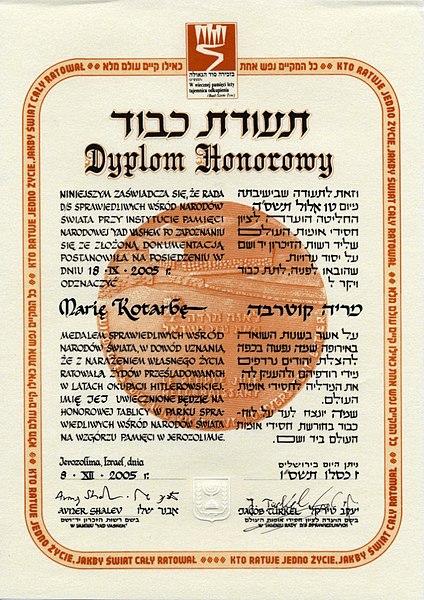Righteous Among the Nations
Righteous Among the Nations is an honourific used by the State of Israel to describe all of the non-Jews who, for purely altruistic reasons, risked their lives in order to save Jews from being exterminated by Nazi Germany during the Holocaust. The term originates from the concept of ger toshav, a legal term used to refer to non-Jewish observers of the Seven Laws of Noah.
Memorial tree in Jerusalem, Israel honoring Irena Sendler, a Polish Roman Catholic nurse who saved 2,500 Jews
Obverse (left) and reverse (right) of the Righteous Medal
The Righteous Diploma of Maria Kotarba
A Righteous Among the Nations award ceremony in the Polish Senate, 2012
Ger toshav is a halakhic term used in Judaism to designate the legal status of a Gentile (non-Jew) living in the Land of Israel who does not want to convert to Judaism but agrees to observe the Seven Laws of Noah, a set of imperatives which, according to the Talmud, were given by God as a binding set of universal moral laws for the "sons of Noah"—that is, all of humanity. A ger toshav, especially one who decides to follow the Noahic covenant out of religious belief rather than ethical reasoning, is commonly deemed a "Righteous Gentile", and is assured of a place in the World to Come .
The rainbow is the unofficial symbol of Noahidism, recalling the Genesis flood narrative in which a rainbow appears to Noah after the Flood; it represents God's promise to Noah to refrain from flooding the Earth and destroying all life again.





